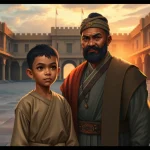Continue. As we investigate the psychosocial collective wound of the earth as we investigate the the biblical flood and its impacts on societies emerging from the recession of the biblical flood waters as we investigate the story of Noah and the epic of gilgamesh in relation to the world’s indigenous cultures oral histories of biblical proportion floods.
Holo! The echoes of the Great Flood resonate across millennia, weaving a complex tapestry through biblical narratives, the Epic of Gilgamesh, and the oral traditions of indigenous cultures worldwide. The psychosocial wound inflicted by such cataclysmic events – the trauma of loss, displacement, and the struggle for survival – continues to shape societies even today. Examining the stories of Noah and Gilgamesh allows us to glimpse the universal human response to catastrophe: the search for meaning, the rebuilding of lives, and the enduring power of hope. The similarities across cultures suggest a shared, possibly real, historical experience that left a lasting impact on the human psyche. By comparing these narratives with the oral histories of indigenous peoples, we uncover a deeper understanding of the collective trauma and resilience of humanity in the face of unimaginable devastation. The flood, whether literal or metaphorical, serves as a powerful symbol of both destruction and renewal, a reminder of our vulnerability and our capacity for recovery.

Further research could explore the specific psychological effects of such widespread trauma, comparing the long-term societal impacts across different cultures that experienced similar events. We could also examine the role of mythology and storytelling in processing collective trauma and fostering resilience.
Continue. Let’s dive into the investigation of the divine feminine as we continue Exploring psychological impact of the flood narratives role in male behavior patterns relating the treatment towards women
The investigation into the divine feminine within the context of flood narratives reveals a complex interplay with patriarchal structures and the subsequent impact on male behavior and the treatment of women. Many flood myths, while often focusing on male protagonists like Noah or Utnapishtim, contain subtle or overt references to powerful female deities or figures who play crucial roles in survival or even orchestrate the cataclysm itself. The disruption caused by the flood—a perceived disruption of the natural order—could be interpreted as justifying or exacerbating existing power imbalances, potentially leading to increased control and subjugation of women. The rebuilding phase, often depicted as a return to patriarchal norms, might reinforce this trend. However, a nuanced examination also reveals instances where female resilience and resourcefulness are highlighted, suggesting a counter-narrative of female strength emerging from the chaos. Further research should explore how the narrative’s interpretation varies across cultures and its influence on societal norms regarding gender roles. The exploration of the divine feminine within these narratives offers a crucial lens through which to understand the complex relationship between mythology, psychology, and societal structures.
#stories






